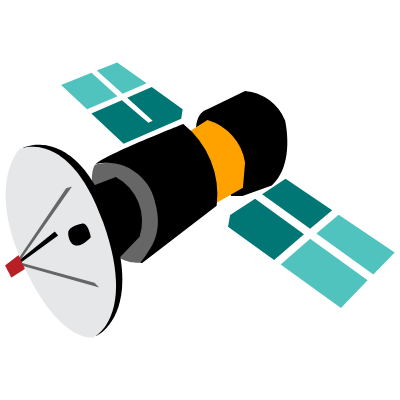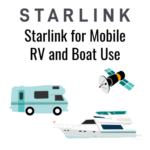Key points:
- Starlink added waitlist areas in a few US states for new residential users where service is currently sold out; waitlists have also appeared in some areas of Canada and Mexico.
- Waitlists do not affect roam users from starting service, but customers will likely experience network congestion in these areas.
- Network congestion is generally on the rise, with Starlink generating complaints as speeds have dropped in many areas around the US.
- Starlink has finally added a customer support phone number for the US and Canada, but only for connectivity problems.
Starlink waitlists for residential service had pretty much disappeared from the map for the past year as Starlink expanded its satellite constellation.
Over that time, speeds also increased, and things were looking more promising for Starlink subscribers in terms of performance. It was not uncommon to see users bragging about impressive speeds, even into the 300-400 Mbps range.
However, the capacity pendulum has swung in the other direction over the past several months, resulting in the return of waitlists, increased network congestion, and slower speeds in many areas.
On the positive side, Starlink is finally rolling out phone support, but it is in a trial phase and quite limited - at least for now.
Read on for all the details...
Table of Contents
Starlink Updates Video Overview
Starlink Waitlists Return
Even though Starlink's constellation of ~7000 LEO (Low Earth Orbit) satellites continues to grow at an unprecedented rate, demand has also increased exponentially and has recently outpaced network capacity in several areas.
Despite an aggressive SpaceX launch schedule, Starlink has been challenged to get enough additional satellites in orbit to increase capacity and stay ahead of demand.
For a while, Starlink's capacity exceeded demand, as the waitlists for the US totally disappeared in October 2023, and speeds were on the rise around the US. However, a little more than a year later, waitlists have returned in a few select areas of the US.
Waitlists are areas noted in darker blue on the Starlink map where Starlink has determined they can no longer support new residential customers. Residential customers have a higher network priority than roam customers. Starlink marks these areas as "waitlist" and residential customers in these affected areas can only put a deposit down and then wait to be contacted when service is available.
While the waitlisted areas are not nearly as large as they once were, some users in WA, OR, CA, TX, and AK around several populated areas are out of luck to purchase residential service right now.
We are also seeing waitlists expand to a couple of larger cities in Canada and Mexico, where demand has again outpaced the availability of residential service.
The reason for this is that the subscriber base has outpaced network capacity. Since May 2024, Starlink has increased its worldwide subscription base from 3 million to almost 5 million, and likely hundreds of thousands of those were in the US alone.
Earlier this year, Starlink also launched a major sale on the Standard Gen 3 hardware that lasted for several months, encouraging more people to sign up for the service. The Gen 3 hardware was sold at a cheaper price than it had ever been ($299 in the US & $199 in Canada).
The long-anticipated Mini Dish was also launched in the US market which helped fuel the surge in subscribers even further.
With the return of waitlists, lower performance in many areas, and increased congestion, the subscriber base has clearly outpaced network capacity as 2024 comes to a close.
Users can still purchase roam service plans in these waitlisted areas, which have the lowest priority on Starlink's network. Existing residential users continue to have service in these areas, but due to increased network demand and deprioritization, all users - especially those on lower-priority plans - may experience higher network congestion and slower speeds.
Network Congestion Becomes a Common Complaint Again
Starlink has been a game changer for nomads and other rural users, offering low-latency, high-speed internet in places where it wasn't available before. Even though network congestion was a common complaint early on, users were just happy to have something that worked much better than any other option.

Earlier in 2024, it seemed like Starlink's network had finally grown enough to meet demand, and most people were happy with the speeds and service they were getting.
However, in the last few weeks or months, it's become more common for users to complain that their speeds and that their service has become unusable due to network congestion.
The capacity of the satellite network over some areas is just too low to satisfy demand.
Network congestion is a well-known aspect of cellular networks, and Starlink as a satellite service is no different - every network has a capacity limit that network operators must manage. For cellular and satellite networks like Starlink alike, the most common management technique is prioritization and, when that isn't sufficient, slower performance for everyone.
With Starlink, this problem has become quite bad in some areas - we've seen reports of speeds under 10 Mbps or less during peak times.
However, it's important to note that network congestion with Starlink is usually location and time-specific, similar to cellular networks. Customers in areas with few other Starlink users continue to see excellent performance.
Customer Support Phone Number Finally Available
Starlink can be great until it isn't. If you have an equipment failure or account issue that keeps you from connecting to Starlink that you can't resolve without Starlink assistance, then you must open a ticket to contact support and then wait.
As the Starlink user base has increased, wait times for support ticket resolution can take days or a week or more. Additionally, if you need something shipped to you, such as a replacement part, you'll be waiting even longer.
Many customers have long been frustrated by this system, especially those wanting to call and talk to someone, as Starlink has not included any phone support, until now.
Starlink is now testing out phone-based customer support in the US & Canada, but limited to customers with connectivity issues.
Starlink states, that this service is in a "trial" phase and is only for customers who can't get online at all.

It's too early to tell how well this will work and what hold times might be like as it becomes more known that this is now available.
Hopefully it will mean better and quicker customer support and it's nice to have an alternative support option, even one that is limited and only in a trial phase.
Starlink Is Not Perfect
As we cover in our Starlink Guide, Starlink has some cons in addition to the capacity issues described above.
While Starlink can provide internet almost anywhere, it's not perfect, and users should definitively be aware of the downsides of depending solely on Starlink as their only source of internet, especially if it's paramount that they stay connected for jobs or other critical reasons.
The biggest downside is the need for a clear, unobstructed view of the sky, which is impossible in many locations. Starlink can also experience extreme weather interruptions, higher power use, equipment failure, and slow customer service response to their tickets.
Redundancy Remains Important For Users To Stay Connected
When nomads ask how people stay connected, many will suggest Starlink and often say it's the only internet they need. But as we preach here at MIRC, everyone's needs and situation differ.
For those who need the most reliable internet connection, it is important not to rely on just one option to get online, which is why we suggest to our members that internet redundancy is a key component to staying connected.

Cellular connectivity remains a very viable option for users to stay connected and is a great option to keep in your internet arsenal, especially in conjunction with Starlink. Additionally, if there is a problem, most cellular customers can drive to a physical store or call or chat with support to get a cellular issue fixed and be back online the same day if needed.
This is not the case with Starlink, and if it's not an issue that other users on social media can walk you through, then there is no telling how long it could take you to get back online if you have a problem. Starlink's ticket system for resolving issues can be exceedingly slow, but potential improvements to customer service are starting to appear...
Concluding Thoughts
Looking back, it's sometimes hard to grasp how much Starlink has changed the game for internet connectivity in the last couple of years, especially for our audience of nomads who work, travel, and live in vans, boats, and RVs. But Starlink is still a relatively new service and is, and will continue to, experience growing pains. Achieving a balance between subscribers and network capacity is a challenge that is probably not going away soon, and that challenge will affect the customer experience.
And as we've extensively covered here at MIRC, Starlink frequently implements dramatic and sudden changes to plans and policies, not all of which are welcome. This churn can make Starlink frustrating, to say the least.
With a company growing as fast as Starlink, these growing pains are inevitable. But the reality is that Starlink provides a unique service valuable to many customers, and competitors are far behind and trying to play catch-up, leaving Starlink as the only game in town for what it offers.
Your best option to account for the vagaries of Starlink service is to practice redundancy and have multiple options to get online, especially cellular, which is robust, reliable, and covers most areas in the US.
Learn More:
Starlink's Referral FAQ.
Use our referral link when purchasing equipment from Starlink.com and activating a consumer Residential or Roam Unlimited data plan - and get a FREE month of service!
And so will someone on our team, which helps us keep our multiple lines of service active for continued testing.
It's a win-win - you save money and help support MIRC!
Further Reading
- Starlink Satellite Internet For Mobile RV And Boat Use - Our featured guide focused on taking advantage of SpaceX's Starlink on the go.
- Mobile Satellite Internet Options -
 Our featured guide on all the current and future satellite internet options of interest to RVers and cruisers.
Our featured guide on all the current and future satellite internet options of interest to RVers and cruisers. - All our our Satellite Internet Resources - Our collection of guides, gear center entries and news coverage on satellite internet.
- Industry Update: Mobile Satellite Internet for RVers & Boaters – Early 2024 Update: Starlink, Kuiper, Direct To Cellular, and Beyond! - Our deep dive into the state of the satellite internet world.
And here is all of our recent satellite internet coverage:











 Mobile Internet Resource Center (dba Two Steps Beyond LLC) is founded by Chris & Cherie of
Mobile Internet Resource Center (dba Two Steps Beyond LLC) is founded by Chris & Cherie of